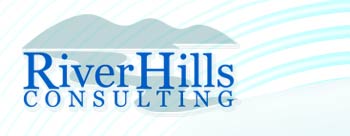 The Consensys™ process, while customized to fit specific client needs, typically includes a combination of group processes and interactive technology. Common elements include the following.
The Consensys™ process, while customized to fit specific client needs, typically includes a combination of group processes and interactive technology. Common elements include the following.
Creativity and Innovation Training. We believe that all individuals are born with creative potential. Years of education and life experience have often taught people that there are risks associated with being "too creative." We offer creativity workshops that reawaken the creative genius in your employees, providing opportunities for new solutions to old, perplexing problems.
Future Pull Processes. Our processes encourage people to work "backwards" from the ideal, rather than "forward" from today. This enables people to "step out of" the day-to-day issues and focus strategically on the key strategies for success in the future. This process builds a belief that something can be created that never existed before, since it focuses on a vision of ideal potentials, rather than on practical constraints and traditional limits. It avoids straight line projections of the past into the future and reinforcement of past practices, thus overcoming the tendency to protect the status quo.
Employee Engagement. We encourage you to include a broad cross-section of employees in the process, building agreement and buy-in as the planning takes place. Our fundamental belief is that people don't resist change, but rather they resist being changed by others, so we engage people in creating the change they way want to see. Natural barriers and resistance to change are reduced and transformation occurs more quickly.
Interactive Technology. Our use of decision-support software sets Consensys™ apart from all other decision-making processes. Experience shows that other strategic processes often fail because all strategies are treated equally, or because the prioritization methodologies employed do not allow for a systematic comparison of each strategy. Our systems allow groups to systematically compare alternative strategies, define the criteria to be used in decision-making, and create weighted decision-matrices quickly and efficiently. All decisions are immediately documented and the group can immediately assess any disagreements about the best strategies for the future.








